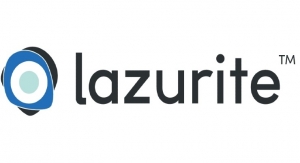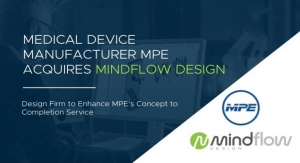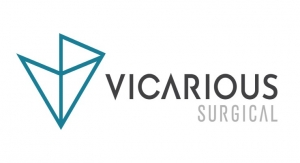Bill Ellerkamp, Contributing Writer07.26.18
Tilak Shah is an innovator and entrepreneur with almost 50 years’ experience in polymer formulating and processing and product/process development of critical components for the medical device industry. He began his near 50-year career in the medical device industry with Upjohn as a research chemist in 1970. He was involved directly in the formulation, development, and/or commercialization of two of the world’s leading biopolymers—Pellethane 2363 grade and Isoplast—during his tenure at Upjohn, and since then has worked with almost all types of polyurethane biopolymers, including Pellethane, Tecoflex, Tecothane, Carbothane, Tecophilic, Elasthane, Bionate, Carbosil, Biospan, Chronoflex, Elast-Eon, and various other non-urethane biopolymers including Pebax polyamides, Kraton TPEs, various biodegradable polymers, and silicone polymers. He recently retired from Polyzen, a developer and manufacturer of customized polymer-based materials, films, components, and assemblies for the medical device industry, which he founded, and whose roots go back over 30 years.
Bill Ellerkamp: When you started with Upjohn in 1970, implant grade polymers were very much in their infancy and, while demand was growing, volume consumption was very low. Were you initially focused on developing biopolymers? Which applications were most attractive at that time?
Tilak Shah: I joined Upjohn to develop general thermoplastic polyurethane (TPU) polymers, which was a new product for Upjohn at that time. They were in the process of installing a new pilot line to manufacture TPU polymers, and my job was to review the process and modify or further develop the base polymer into a series of suitable formulations for a variety of applications. At that time, biopolymers per se did not exist. There were some formulations that were emerging, for example, Tecoflex from Thermedics (now part of Lubrizol). Upjohn began to focus in the early 1970s on aromatic polyether polyurethane formulations for biomedical applications. One of the earliest applications I worked on was a polyether formulation that was being solution dipped for components in an artificial heart pump being developed by Dr. Willem Kolff at the University of Utah, the first of which was implanted in 1982 in patient Barney Clark. At the same time, several applications were emerging for extruded catheter tubing for dialysis and pacemaker leads. All these applications evolved from aromatic polyether polyurethane formulations, which I helped develop, and which led to the development of the Pellethane 2363 series of biomedical grade urethanes, with Shore Hardness range from 75A to 75D.
Ellerkamp: What role did you play in the development and/or commercialization of Pellethane by the medical device industry?
Shah: I played a big role in the development of all types of Pellethane formulations. Shortly after it was launched, I moved into technical service, and moved to Europe in 1975 to set up a TPU plant for Upjohn. I helped transfer, troubleshoot, and scale the facility in the Netherlands. Then I worked with all the users of Pellethane to help them optimize processing conditions on their machinery and equipment. At that time, Upjohn’s TPU customers were primarily injection molding for footwear, seals and gaskets, skateboard wheels, and gears, and extruding for lay flat fire hose and medical tubing, wire, and cable, as well as flat die and blown film applications.
Ellerkamp: What other early applications were developing in the medical device industry?
Shah: Besides extruded tubing and protective sheathes from PU film, polyurethane low pressure, compliant balloons were an early application that were manufactured by liquid casting of TPU, mainly to replace natural rubber latex and PVC plastisol formulations. The tackiness of TPU initially presented processing challenges, particularly in demolding, for processors accustomed to dipping latex or plastisol. An early adopter in the mid-1980s, in the area of balloons, was a urology company in Germany, which was later acquired by a major U.S. multinational medical device manufacturer. Polyzen is still supplying this customer today with TPU compounded and formulated resins, which were first developed by me.
Ellerkamp: How did you transition your career from a pure polymer development focus to more of a medical device development and manufacturing focus?
Shah: In 1985, Dow Chemical purchased the Urethane Chemical division of Upjohn, and from 1985 to 1986, I continued my work as the product manager for Upjohn’s new specialty polymers (e.g., Isoplast, Polyamide 7030, Polyimide 2080, and Estamid), and was responsible for developing the Industrial market for those polymers. I was offered a position at Dow’s headquarters in Midland, Mich., or a severance package. My wife and I decided not to go to Midland, and we took the severance package, which became the seed capital to go into business for myself. I started as a consultant, and Dow referred many medical device clients to me for technical service and applications development. I also supported several clients in scale-up and/or startup operations for TPU polymerization plants worldwide. Later in the 1980s, it was becoming clear that the medical device industry offered excellent long-term potential. Balloon catheters were making great inroads into a variety of procedural areas, including angioplasty balloons for cardiovascular applications; thermo-dilution, arterial, and venous balloon catheters for vascular applications; occlusion balloons for urological applications; and rectal balloon catheters for gastrointestinal applications.
At the same time, latex allergies were emerging as an issue in hospitals. Many people began to explore TPU and silicone dispersions as an alternative to latex-dipped products (i.e., gloves, condoms, catheter balloons). I partnered at that time with others in consulting on the start-up of solution dipping production for glove and condom products. I unfortunately had a bad experience with a partner at the time, which taught me a lot about what not to do, but I was not deterred from my commitment to pursue medical device products and markets. However, gloves and condoms were very high volume and price sensitive applications. At that time, I was continuing with my compounding business, which I had started in 1987, and also began to focus on more specialized applications. Some of these early applications were a polyurethane thin film RF-welded glove, as an alternative to latex gloves to protect doctors’ hands from allergic skin reactions, as well as for semiconductor cleanroom applications; a one-size-fits-all 70 denier Nylon fiber knit glove liner to be worn underneath the latex glove to protect glove touching the skin; and copper-silver coated nylon fiber knit gloves for anti-static electronics applications. Those products were commercialized by my company, Polygenex, and sold under that brand.
In the early 1990s, I was approached by a leading nitinol medical device development group, which was working with a large medical device OEM on a minimally invasive laparoscopic organ retrieval bag. At the time, I was still a “kitchen and garage” shop. I realized that the project really required a film-welded bag, which the customer fully supported and Polygenex purchased the equipment to RF weld the organ bags. I filed several patents at this time around RF welding TPU thin films (0.001 inch to 0.005 inch film thickness). The customer, in fact, to help accelerate the project, made an investment in and became a shareholder in Polygenex. The product we developed has gone through a number of successive innovations, and subsequent generations, and is still on the market today, available from one of the largest medical device OEMs in the world.
Ellerkamp: Tell me about the intellectual property you have created in your career?
Shah: I have been named in and/or awarded over 30 patents, going back to 1975 with Upjohn (eight alone at Upjohn). I also received a science award from Upjohn for contributing to basic science and technology. Further, I developed and patented a high-pressure angioplasty balloon out of Isoplast in the late 1980s to replace crosslinked LDPE high pressure balloons for cardiovascular applications. In the early 1990s under Polygenex, I received another nine patents on a variety of processes and/or products, including radiation-resistant film for personal protection devices; glove liners being ambidextrous and universal in size; four patents in dip-molding processes; and three in thin film RF welding processes. And, at Polyzen, we received another 15-plus patents, including five in thermoforming RF welding processes; four on thin multi-layered articulated film welded balloons; two in UV cross linkable balloon formulations; and another five to six in various component processes.
Ellerkamp: Can you share with me any specific examples of devices that made a significant contribution to the medical device community and healthcare you are particularly proud to have been associated with?
Shah: Of course, the early artificial heart pump, and subsequent LVAD applications. Also, the first laparoscopic organ retrieval bag; a urethane tracheal balloon for a tracheostomy tube; various urethane and silicone coated stents; multi-layered PU film-welded articulated balloons for prostate immobilization; thermoformed RF film-welded balloons for intragastric/obesity treatment, and other applications where high body to neck diameter ratio is desired, as well as many critical components for various gastrointestinal and cardiovascular devices.
Ellerkamp: You have had extensive experience in a broad cross-section of biopolymers and polymer processing—compounding, dipping, extrusion, blow molding, thermoforming, molding, lamination, welding, etc. How much have these progressed from art to science during your career, and which still have significant elements of art associated with them?
Shah: While many of these processes still remain an art, various companies have worked diligently toward understanding and controlling the variables. Compounding and formulating still remains an art today, as do preparation and drying of all ingredients at their specific conditions and in sequencing the addition of each ingredient. These processes require knowledge, experience, and skills to manage and control the process. Most other melt processes, like extrusion and injection molding of biopolymers, have progressed substantially from art toward science by incorporating better controls and measuring systems, including better drying systems and computerized electronic controllers for temperature and pressure control, automated laser, and ultrasonic thickness gauges for tubing and film extrusion processes. By comparison, extrusion blow molding of specialty urethanes is still relatively an art and very much operator dependent. Liquid processing, especially dip molding and dip coating, remains very much an art, as layer by layer solvent evaporation and variable thickness gradients require more experienced operators, in addition to sophisticated robots. Solid state processes (e.g., secondary processing of films using welding and thermoforming) need various product specific jigs and fixtures to minimize the art and get to a more consistent and repeatable process. With that said, the one key factor to pay attention to with polymer processing is lot to lot variability of PU or Pebax resins. These require an understanding of Melt Flow Index or Intrinsic Viscosity, and knowledge and experience of how material variability interacts with and influences process parameters.
Ellerkamp: What industry problems, or opportunities, did you found Polyzen to address? How has it evolved?
Shah: Polyzen was initially a hybrid consulting, formulating and compounding, and critical component development company. However, having all three types of processes (melt state, solid state, and liquid state) with a variety of processing equipment under the one roof, Polyzen gradually became a “one-stop-shop” for its customers, including many venture capital-backed companies, as well as development groups of major OEMs. Over time, we started manufacturing more and more of the components for the given devices and eventually getting into full assembly of the device. And for a few customers, we are the end device manufacturer where Polyzen is doing final packaging and supporting outside sterilization services. However, one thing which remains consistent to most of our customer projects is to engage at the identification and selection stage for the polymer and to influence the product and process design of critical components to help optimize overall product functionality, performance, and manufacturability.
Ellerkamp: How has the medical device industry changed during your career?
Shah: Over the years, medical devices have become more sophisticated and are requiring more functional and design performance from the properties of biopolymers. Also, integrating electronics into devices has presented new challenges to both materials and processes, as it adds another layer of complexity beyond chemical and mechanical, requiring different knowledge and skill sets of engineering understanding. Also, regulatory constraints are tightening and putting more burden on teams to develop more sophisticated and appropriately designed risk assessments, and verification and validation protocols for components, products, and processes, as well as quality control procedures to ensure every sub-assembly step is in compliance. Lastly, cost is becoming more and more important in the development and manufacturing of devices, requiring companies to think about the value of the device in addition to just addressing the clinical problem.
Ellerkamp: What is your proudest career achievement?
Shah: Creating Polyzen from a “kitchen and garage” consulting and compounding shop in 1991 into, 27 years later, a full-service innovation driven solutions partner. We are now in 75,000 sq. ft. of manufacturing space with over 110 full-time employees and, looking at the tenure of our employees, with 20 employees over 10 years and four with over 15 years. I feel fortunate to be able to leave behind a legacy and contribution to the development of one of the world’s leading biopolymers in Pellethane 2363, and for having made a difference to the lives of patients around the world.
Ellerkamp: What’s in store for the future of Polyzen?
Shah: I am very proud to be working with my two sons, Rubin and Nikin, who bring a set of new energy, skills, and experience to continue to build and grow Polyzen. Rubin has been with me for 15 years, and has an in-depth knowledge and understanding of the medical device industry and our customers. Nikin has rejoined Polyzen for the third time more recently, following his pursuit of a Duke/Fuqua MBA and a stint at Medtronic. I am very confident in my legacy in their hands. I have also hired and am working closely with a well-experienced polymer scientist, Sunil Inamdar, who is challenging me and the organization to move in new and exciting directions.
Ellerkamp: What is the future development direction you foresee in urethane polymers?
Shah: There is further progress to be made. I particularly see evolution in bioresorbable, urethane, and full latex replacement materials, with over 1,000 percent elongation and very low set temperatures. In processing technologies, I see evolution in liquid injection molding, reaction injection molding, and micro-molding of urethanes. Also, developing the formulations and process for urethane 3D printing and body part/organ replacement applications. In addition, advancing very rapidly, and offering significant potential, are process and tolerance controls. These challenges will keep me occupied in my “retirement.”
Bill Ellerkamp is a medical device industry executive and strategic advisor. He has more than 35-years of operating experience, primarily in medtech contract manufacturing. He currently serves on several boards and, through his consulting group, Acceleration Medtech, provides advisory services to private equity firms, corporations, and independent business owners on strategy, market assessment, business development, operational planning, buy- and sell-side planning, and due diligence. He can be reached at bill.ellerkamp@gmail.com.
Bill Ellerkamp: When you started with Upjohn in 1970, implant grade polymers were very much in their infancy and, while demand was growing, volume consumption was very low. Were you initially focused on developing biopolymers? Which applications were most attractive at that time?
Tilak Shah: I joined Upjohn to develop general thermoplastic polyurethane (TPU) polymers, which was a new product for Upjohn at that time. They were in the process of installing a new pilot line to manufacture TPU polymers, and my job was to review the process and modify or further develop the base polymer into a series of suitable formulations for a variety of applications. At that time, biopolymers per se did not exist. There were some formulations that were emerging, for example, Tecoflex from Thermedics (now part of Lubrizol). Upjohn began to focus in the early 1970s on aromatic polyether polyurethane formulations for biomedical applications. One of the earliest applications I worked on was a polyether formulation that was being solution dipped for components in an artificial heart pump being developed by Dr. Willem Kolff at the University of Utah, the first of which was implanted in 1982 in patient Barney Clark. At the same time, several applications were emerging for extruded catheter tubing for dialysis and pacemaker leads. All these applications evolved from aromatic polyether polyurethane formulations, which I helped develop, and which led to the development of the Pellethane 2363 series of biomedical grade urethanes, with Shore Hardness range from 75A to 75D.
Ellerkamp: What role did you play in the development and/or commercialization of Pellethane by the medical device industry?
Shah: I played a big role in the development of all types of Pellethane formulations. Shortly after it was launched, I moved into technical service, and moved to Europe in 1975 to set up a TPU plant for Upjohn. I helped transfer, troubleshoot, and scale the facility in the Netherlands. Then I worked with all the users of Pellethane to help them optimize processing conditions on their machinery and equipment. At that time, Upjohn’s TPU customers were primarily injection molding for footwear, seals and gaskets, skateboard wheels, and gears, and extruding for lay flat fire hose and medical tubing, wire, and cable, as well as flat die and blown film applications.
Ellerkamp: What other early applications were developing in the medical device industry?
Shah: Besides extruded tubing and protective sheathes from PU film, polyurethane low pressure, compliant balloons were an early application that were manufactured by liquid casting of TPU, mainly to replace natural rubber latex and PVC plastisol formulations. The tackiness of TPU initially presented processing challenges, particularly in demolding, for processors accustomed to dipping latex or plastisol. An early adopter in the mid-1980s, in the area of balloons, was a urology company in Germany, which was later acquired by a major U.S. multinational medical device manufacturer. Polyzen is still supplying this customer today with TPU compounded and formulated resins, which were first developed by me.
Ellerkamp: How did you transition your career from a pure polymer development focus to more of a medical device development and manufacturing focus?
Shah: In 1985, Dow Chemical purchased the Urethane Chemical division of Upjohn, and from 1985 to 1986, I continued my work as the product manager for Upjohn’s new specialty polymers (e.g., Isoplast, Polyamide 7030, Polyimide 2080, and Estamid), and was responsible for developing the Industrial market for those polymers. I was offered a position at Dow’s headquarters in Midland, Mich., or a severance package. My wife and I decided not to go to Midland, and we took the severance package, which became the seed capital to go into business for myself. I started as a consultant, and Dow referred many medical device clients to me for technical service and applications development. I also supported several clients in scale-up and/or startup operations for TPU polymerization plants worldwide. Later in the 1980s, it was becoming clear that the medical device industry offered excellent long-term potential. Balloon catheters were making great inroads into a variety of procedural areas, including angioplasty balloons for cardiovascular applications; thermo-dilution, arterial, and venous balloon catheters for vascular applications; occlusion balloons for urological applications; and rectal balloon catheters for gastrointestinal applications.
At the same time, latex allergies were emerging as an issue in hospitals. Many people began to explore TPU and silicone dispersions as an alternative to latex-dipped products (i.e., gloves, condoms, catheter balloons). I partnered at that time with others in consulting on the start-up of solution dipping production for glove and condom products. I unfortunately had a bad experience with a partner at the time, which taught me a lot about what not to do, but I was not deterred from my commitment to pursue medical device products and markets. However, gloves and condoms were very high volume and price sensitive applications. At that time, I was continuing with my compounding business, which I had started in 1987, and also began to focus on more specialized applications. Some of these early applications were a polyurethane thin film RF-welded glove, as an alternative to latex gloves to protect doctors’ hands from allergic skin reactions, as well as for semiconductor cleanroom applications; a one-size-fits-all 70 denier Nylon fiber knit glove liner to be worn underneath the latex glove to protect glove touching the skin; and copper-silver coated nylon fiber knit gloves for anti-static electronics applications. Those products were commercialized by my company, Polygenex, and sold under that brand.
In the early 1990s, I was approached by a leading nitinol medical device development group, which was working with a large medical device OEM on a minimally invasive laparoscopic organ retrieval bag. At the time, I was still a “kitchen and garage” shop. I realized that the project really required a film-welded bag, which the customer fully supported and Polygenex purchased the equipment to RF weld the organ bags. I filed several patents at this time around RF welding TPU thin films (0.001 inch to 0.005 inch film thickness). The customer, in fact, to help accelerate the project, made an investment in and became a shareholder in Polygenex. The product we developed has gone through a number of successive innovations, and subsequent generations, and is still on the market today, available from one of the largest medical device OEMs in the world.
Ellerkamp: Tell me about the intellectual property you have created in your career?
Shah: I have been named in and/or awarded over 30 patents, going back to 1975 with Upjohn (eight alone at Upjohn). I also received a science award from Upjohn for contributing to basic science and technology. Further, I developed and patented a high-pressure angioplasty balloon out of Isoplast in the late 1980s to replace crosslinked LDPE high pressure balloons for cardiovascular applications. In the early 1990s under Polygenex, I received another nine patents on a variety of processes and/or products, including radiation-resistant film for personal protection devices; glove liners being ambidextrous and universal in size; four patents in dip-molding processes; and three in thin film RF welding processes. And, at Polyzen, we received another 15-plus patents, including five in thermoforming RF welding processes; four on thin multi-layered articulated film welded balloons; two in UV cross linkable balloon formulations; and another five to six in various component processes.
Ellerkamp: Can you share with me any specific examples of devices that made a significant contribution to the medical device community and healthcare you are particularly proud to have been associated with?
Shah: Of course, the early artificial heart pump, and subsequent LVAD applications. Also, the first laparoscopic organ retrieval bag; a urethane tracheal balloon for a tracheostomy tube; various urethane and silicone coated stents; multi-layered PU film-welded articulated balloons for prostate immobilization; thermoformed RF film-welded balloons for intragastric/obesity treatment, and other applications where high body to neck diameter ratio is desired, as well as many critical components for various gastrointestinal and cardiovascular devices.
Ellerkamp: You have had extensive experience in a broad cross-section of biopolymers and polymer processing—compounding, dipping, extrusion, blow molding, thermoforming, molding, lamination, welding, etc. How much have these progressed from art to science during your career, and which still have significant elements of art associated with them?
Shah: While many of these processes still remain an art, various companies have worked diligently toward understanding and controlling the variables. Compounding and formulating still remains an art today, as do preparation and drying of all ingredients at their specific conditions and in sequencing the addition of each ingredient. These processes require knowledge, experience, and skills to manage and control the process. Most other melt processes, like extrusion and injection molding of biopolymers, have progressed substantially from art toward science by incorporating better controls and measuring systems, including better drying systems and computerized electronic controllers for temperature and pressure control, automated laser, and ultrasonic thickness gauges for tubing and film extrusion processes. By comparison, extrusion blow molding of specialty urethanes is still relatively an art and very much operator dependent. Liquid processing, especially dip molding and dip coating, remains very much an art, as layer by layer solvent evaporation and variable thickness gradients require more experienced operators, in addition to sophisticated robots. Solid state processes (e.g., secondary processing of films using welding and thermoforming) need various product specific jigs and fixtures to minimize the art and get to a more consistent and repeatable process. With that said, the one key factor to pay attention to with polymer processing is lot to lot variability of PU or Pebax resins. These require an understanding of Melt Flow Index or Intrinsic Viscosity, and knowledge and experience of how material variability interacts with and influences process parameters.
Ellerkamp: What industry problems, or opportunities, did you found Polyzen to address? How has it evolved?
Shah: Polyzen was initially a hybrid consulting, formulating and compounding, and critical component development company. However, having all three types of processes (melt state, solid state, and liquid state) with a variety of processing equipment under the one roof, Polyzen gradually became a “one-stop-shop” for its customers, including many venture capital-backed companies, as well as development groups of major OEMs. Over time, we started manufacturing more and more of the components for the given devices and eventually getting into full assembly of the device. And for a few customers, we are the end device manufacturer where Polyzen is doing final packaging and supporting outside sterilization services. However, one thing which remains consistent to most of our customer projects is to engage at the identification and selection stage for the polymer and to influence the product and process design of critical components to help optimize overall product functionality, performance, and manufacturability.
Ellerkamp: How has the medical device industry changed during your career?
Shah: Over the years, medical devices have become more sophisticated and are requiring more functional and design performance from the properties of biopolymers. Also, integrating electronics into devices has presented new challenges to both materials and processes, as it adds another layer of complexity beyond chemical and mechanical, requiring different knowledge and skill sets of engineering understanding. Also, regulatory constraints are tightening and putting more burden on teams to develop more sophisticated and appropriately designed risk assessments, and verification and validation protocols for components, products, and processes, as well as quality control procedures to ensure every sub-assembly step is in compliance. Lastly, cost is becoming more and more important in the development and manufacturing of devices, requiring companies to think about the value of the device in addition to just addressing the clinical problem.
Ellerkamp: What is your proudest career achievement?
Shah: Creating Polyzen from a “kitchen and garage” consulting and compounding shop in 1991 into, 27 years later, a full-service innovation driven solutions partner. We are now in 75,000 sq. ft. of manufacturing space with over 110 full-time employees and, looking at the tenure of our employees, with 20 employees over 10 years and four with over 15 years. I feel fortunate to be able to leave behind a legacy and contribution to the development of one of the world’s leading biopolymers in Pellethane 2363, and for having made a difference to the lives of patients around the world.
Ellerkamp: What’s in store for the future of Polyzen?
Shah: I am very proud to be working with my two sons, Rubin and Nikin, who bring a set of new energy, skills, and experience to continue to build and grow Polyzen. Rubin has been with me for 15 years, and has an in-depth knowledge and understanding of the medical device industry and our customers. Nikin has rejoined Polyzen for the third time more recently, following his pursuit of a Duke/Fuqua MBA and a stint at Medtronic. I am very confident in my legacy in their hands. I have also hired and am working closely with a well-experienced polymer scientist, Sunil Inamdar, who is challenging me and the organization to move in new and exciting directions.
Ellerkamp: What is the future development direction you foresee in urethane polymers?
Shah: There is further progress to be made. I particularly see evolution in bioresorbable, urethane, and full latex replacement materials, with over 1,000 percent elongation and very low set temperatures. In processing technologies, I see evolution in liquid injection molding, reaction injection molding, and micro-molding of urethanes. Also, developing the formulations and process for urethane 3D printing and body part/organ replacement applications. In addition, advancing very rapidly, and offering significant potential, are process and tolerance controls. These challenges will keep me occupied in my “retirement.”
Bill Ellerkamp is a medical device industry executive and strategic advisor. He has more than 35-years of operating experience, primarily in medtech contract manufacturing. He currently serves on several boards and, through his consulting group, Acceleration Medtech, provides advisory services to private equity firms, corporations, and independent business owners on strategy, market assessment, business development, operational planning, buy- and sell-side planning, and due diligence. He can be reached at bill.ellerkamp@gmail.com.



























